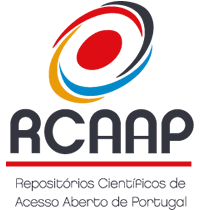Development of an assessment tool to identify the best practices and protocols for CBRN threats
DOI:
https://doi.org/10.48797/sl.2025.198Keywords:
PosterAbstract
Background: Portugal's ability to respond to terrorist threats remains challenging and complex. According to Vegar [1], the intricate nature of the Portuguese legal system, which regulates each institution's working competencies, interactions, and chain of command, is too strict. These regulations and legal attributions present several difficulties in fulfilling the mission of responding to and combating terrorism, especially when the threat is chemical or biological [1-3]. Objective: This work aims to design/elaborate/prepare a questionnaire to be filled in by all the responder entities (e.g., Civil Protection Authorities, GNR, Instituto Dr. Ricardo Jorge, Armed Forces Hospital, among others) in case of an event. Methods:This questionnaire will contain twenty questions designed to gather information from institutions identified in the CBRN nº3 Operational Directives [2]. Fisher's Exact Test will be applied to the statistical analysis for the Closed questions to identify associations between variables. The weighted average will be calculated for the prioritization questions, and Kendall's Concordance Coefficient (W) will be used to assess agreement between respondents. For the free response questions, a content analysis will be carried out to identify recurring themes and patterns, followed by a Cluster Analysis to identify specific profiles or patterns. Results: The main goal is to evaluate the readiness of each officially deployed institution when faced with biological and chemical threats. By accurately identifying the institutions involved, we can clarify the response hierarchy, map their interconnections, and detail the procedural protocols for their intervention. Additionally, it is crucial to specify the types of threats each laboratory or institution is prepared to manage. Creating multidisciplinary assessment tools to identify the procedures adopted is fundamental to complementing the information previously obtained in the literature review. Conclusions: The results will allow the development of a checklist of multidisciplinary guidelines, raise awareness among authorities/entities, and promote investment in improving protocols to increase preparedness and mitigate the consequences.References
1. Vegar J. The Grey Threat: Presence of Jihadist Terrorism and Failings in the Portuguese National Security System. Studies in Conflict & Terrorism 2008, 31, 456-479, doi: 10.1080/10576100801980252
2. ANEPC ANdEePC- (2010) Diretiva Operacional Nacional Nº 3 – NRBQ. Lisboa, Portugal: ANEPC.
3. Ministros GdP-PdCd (2023) Aprovação da Estratégia Nacional de Combate ao Terrorismo. Portugal: Diário da República.
Downloads
Published
How to Cite
Issue
Section
License
Copyright (c) 2025 Diana Bravo-Leão, Luís Marques Fernandes

This work is licensed under a Creative Commons Attribution 4.0 International License.
In Scientific Letters, articles are published under a CC-BY license (Creative Commons Attribution 4.0 International License), the most open license available. The users can share (copy and redistribute the material in any medium or format) and adapt (remix, transform, and build upon the material for any purpose, even commercially), as long as they give appropriate credit, provide a link to the license, and indicate if changes were made (read the full text of the license terms and conditions of use).
The author is the owner of the copyright.









